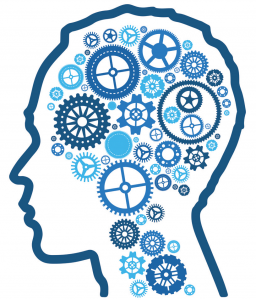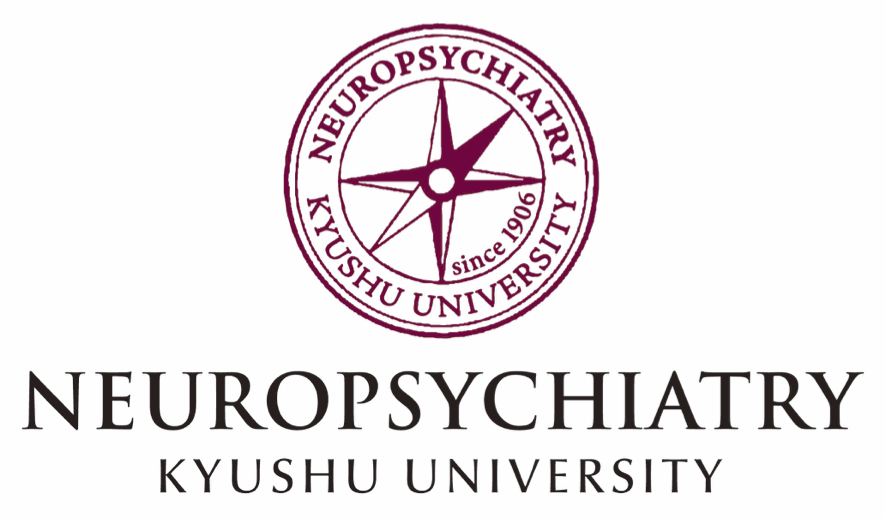Message from Professor Kanba
Psychiatry involves a wide variety of fields, including Genetics, Neuroscience, Psychology, Philosophy, Sociology, and Culture. Therefore, research topics have naturally expanded to include the understanding and treatment of extremely complicated psychiatric phenomena.
Throughout Kyushu University's long history, various research groups have been formed and each group has been remarkably successful. Studies have been conducted on psychiatric disorders from infant-child psychiatry to geriatric psychiatry. In addition, research approaches have included Neuroscience, Molecular genetics, Neuropsychiatry, Psychology, Philosophy, and Sociology. The department has confronted the mysteries of the Mind and Brain, and strives to foster excellent psychiatrists who can understand the Mind and Brain, as well as humans and society.
The department hopes that the first-rate psychiatrist in clinical care, research, and education will become of great help for our patients and their families. The department aspires to create an environment in which each member can work productively under satisfying environment.
Department of Neuropsychiatry at Kyushu University - Its 100-year history -
The Department of Neuropsychiatry at Kyushu University opened as a department for psychosis on April 23, 1906, three years following the establishment of the Kyoto Imperial University Fukuoka School of Medicine (precursor of Kyushu Imperial University). Yasusaburo Sakaki, who had been an associate professor at Tokyo Imperial University, was introduced as the first professor. In 2006, the Department commemorated its 100th anniversary, a century to the day after its opening. The membership register of the Department of Psychiatry at Kyushu University, which began with Sakaki, now lists approximately 800 members in chronological order.
Because the University did not initially have its own hospital, Tokyo Sugamo Hospital (then director, Dr. Shuzo Kure), the precursor of Tokyo Metropolitan Matsuzawa Hospital, was used for field training. A magnificent campus, consisting of a wooden two-story main building and wards, was subsequently built. This elegant structure was later featured by Kyusaku Yumeno as the setting for Dogra Magra, and still exudes the atmosphere of its early days. The Department of Psychiatry, which was surrounded by a brick wall and occupied a large area that included tennis courts and a baseball field, became a world of its own.
Sakaki was the youngest brother of Hajime Sakaki, who was the first professor at the Department of Psychiatry at the University of Tokyo. Yasusaburo Sakaki was a brilliant scholar who gave highly challenging lectures and whose talents extended beyond the realm of psychiatry and into music. He is known for his longstanding friendship with Albert Einstein, who he met at a music store in Berlin while studying abroad in Germany, and for founding the Kyushu University Philharmonic Orchestra. In 1925, Mitsuzo Shimoda, who had been a professor at Keio University, became the second professor. Shimoda’s arrival marked the beginning of a golden era that lasted for over 20 years. During this era, Shimoda and his study group made several major achievements, such as the discovery of “immodithymie” and research on the neuropathology of schizophrenia in addition to continuous sleep treatment and electric convulsive therapy. This academic culture became known as the Southwest Japanese School.
Among those conducting empirical research on immodithymie under Shimoda’s guidance was Shuzo Naka (a lecturer at Kyushu University at the time), who would later become the third professor. Naka became a psychiatry professor at Taihoku Imperial University after studying abroad in Europe and the United States, and formed the basis of psychiatry in Taiwan. Although he later returned to Kyushu University, neurochemistry was still in its early stages in Japan at the time, and spirited psychiatrists such as Naka thus collaborated with brain scientists to conduct brain research in search of the causes of psychiatric disorders.
Shortly after the discovery of chlorpromazine, Tsunao Sakurai, a professor at the University of Tokushima, took over the position. Sakurai immediately began research on psychopharmacology, and personally amassed achievements related to neurosis, particularly war neurosis. As a well-balanced and prominent clinician with outstanding interview skills, he was placed alongside Nishimaru as leaders in the field psychiatry in Western and Eastern Japan, respectively. Southwest Japan School has since become a base for psychotherapy and psychopathology.
During the next quarter of a century, Hiroyuki Nakao and Nobutada Tashiro served as professors and made notable advancements in a diverse range of fields in psychiatry. Despite taking office amidst the chaos of the student movement, Hiroyuki Nakao led research in brain physiology and made remarkable findings, including evidence that the hypothalamus played a central role in emotions. Nobutada Tashiro advanced research on connections between the mind and body in the field of emotion research. In addition, he significantly developed Morita therapy, the importance of which had been recognized by Shimoda, to the extent that it is now commonly associated with Jikei University as well as Kyushu University.
The 100-year course of the Department of Neuropsychiatry at Kyushu University has been summarized as above with introductions of past professors. Over the course of its history, the Department of Psychiatry at Kyushu University has produced numerous graduates with unique talents and characters, and established itself as the pioneer of psychiatry and psychiatric medicine in Japan. The achievements of our graduates over the past century have been firmly etched in the contents of today’s psychiatry and psychiatric medicine. It would be impossible to note every activity in our history, and the above summary only contains a limited selection of events involving a limited number of individuals. We hope that the countless gaps can be covered by the memories of members in the field of psychiatry. Finally, let us ask ourselves again what achievements we can leave behind for future generations, and point our compass toward another 100-year course in our history.
Research Activities in the Department of Neuropsychiatry
Although the lifetime prevalence of mental disorders is high, at approximately 50%, mental disorders remain shrouded in mystery. Some form of breakthrough technology is required for causative research and the development of diagnostic and therapeutic methods. Therefore, at the Department of Neuropsychiatry, Kyushu University, studies are being conducted using various methodologies on a wide variety of mental disorders affecting infants to the elderly. The current activities of each group are explained below.
Behavioral Pharmacology/Neurochemistry Research Group
This group was initially founded as the Neurochemistry laboratory by the third chairperson, Shuzo Naka. Beginning in the latter half of the 1970s, this group has collaborated with the Clinical Research Department of the National Hizen Mental Institute (currently, the Hizen Psychiatric Center). Subsequently, the group was divided into behavioral pharmacochemistry and molecular genetics research groups. The behavioral pharmacology/neurochemistry research group, lead by Toshihide Kuroki, has employed in vivo monitoring techniques, such as intracerebral microdialysis, in order to measure the kinetics of extracellular catecholamine and glutamic acid in the brain of non-restrained rats. Recently, this technique has been used to clarify the action mechanism of second-generation antipsychotic agents. Presently, research is being conducted in order to clarify developmental abnormalities in the central nervous system associated with the mother-infant separation stress model by analyzing functional changes in the monoaminergic system of the prefrontal and associated areas.
Molecular Genetics Research Group
Research on mental disorders from a molecular genetics perspective began in May 1999 when Hiroaki Kawasaki returned to Japan from the Massachusetts Institute of Technology (MIT), in Boston. The three main research topics in the molecular genetics research group are the genetic analysis of schizophrenia, Alzheimer's disease, and frontotemporal dementia. The group has collaborated with MIT, the Memorial Sloan-Kettering Cancer Center, and NIHM USA. In terms of industrial-academic research, the group has been collaborating with Hitachi Chemical on the development of a diagnostic system, and to date, three patents have been filed. The group is also working with other pharmaceutical companies.
Molecular Cytology Research Group
Under the leadership of Akira Monji, molecular cytology research is being conducted on mental disorders. Currently, the group is studying the activities of microglia, which are considered to be a factor in the neurotoxicity of β-amyloid protein in Alzheimer's disease, by comparing the characteristics of microglia treated with β-amyloid protein and degrees of fibrosis. In addition, the group is screening for substances that suppress the activities of microglia. Furthermore, by concentrating on ER stress, which has recently become a closely examined cause of nerve cell death, basic studies have been conducted on mood stabilizers and nerve cell injury caused by the depletion of calcium ions in ER. Furthermore, clinical studies have been conducted in order to elucidate the role of homocysteine in the pathophysiology of mental disorders among patients with epileptic psychosis or dementia. Particularly for patients with dementia, in 2004 the group formed a national multicenter collaborative study group involving neuroimaging and genetic analysis in conjunction with the Kurume University Brain Center.
Brain Physiology Research Group
The group was reorganized in the spring of 2004, with a leadership of Toshiaki Onitsuka, who has studied neuroimaging and electrophysiology of schizophrenic patients at Harvard Medical School Psychiatry Neuroimaging Laboratory . To clarify the pathology of psychiatric disorders, our group uses multi-modality in vivo neuroimaging approach including electroencephalography (EEG), magnetoencephalography (MEG), near-infrared spectroscopy (NIRS), and magnetic resonance imaging (MRI). Major research interests of our group are: 1) the relationship between cognitive, structural, and neurophysiological measures in schizophrenia; 2) cognitive function deficits in psychiatric disorders measured by changes of cerebral blood flow with fMRI and NIRS; 3) evoked potentials and magnetic fields in psychiatric disorders; 4) biological markers and psychiatric disorders.
Behavioral Therapy Research Group
Under the leadership of Akiko Nakagawa (currently Assistant Professor at Kawasaki University School of Medicine), the group has performed and studied behavioral therapy which is a treatment method identifying solutions by objectively assessing issues facing patients from the viewpoint of learning theory. The group has focused on treatment and research regarding obsessive-compulsive disorder (OCD). OCD is an intractable disease characterized by repetitive behaviors, such as hand washing and checking behaviors. The group has been involved in treatment and education through the Internet. At present, the group is conducting controlled studies on the efficacy of behavioral and drug therapies. Furthermore, before and after therapy, assessed is, using functional MIR, cognitive functions and brain activities while collaborating with the Radiology Department in order to ascertain the relationship between therapy and brain changes. The final goals of the group are to clarify the pathology of OCD and establish appropriate therapeutic guidelines.
Psychopathology Research Group
The group is led by Shinichiro Matsuo. Throughout the long history of this group, they have proposed novel therapeutic concepts, and continue to discuss concepts related to schizophrenia and dissociative disorders. The group has fostered many first-class clinicians and has positively affected the lives of many patients. Multidisciplinary and heterogeneous thinking is an asset of this group, and with original thinking, the group has attempted to establish another dimension in standard treatments that are typically only two-dimensional. Currently, the information tools that cultivate multidisciplinary and heterogeneous thinking incorporate not only the academic ambitions of group members, but also phenomenology, psychoanalysis, medical anthropology, literature, and cultural psychiatry. As stated by the group, their outlook is from the left, and they value romantic views, not just scientific excitement. This is a very rare group in Japan.
Child Psychiatry Research Group
Under the leadership of Keiko Yoshida, this group treats and studies the mental health of children and their families from the standpoint of cognitive, emotional, and behavioral development. For perinatal mental health in particular, the group actively collaborates with other academic institutions in and out of Japan. Mild developmental disorders, such as attention deficit disorder, learning disorders, and high-functioning pervasive development disorder, have been considered important topics in education; thus, the main area of research has been support and therapy for families with children with these disorders in adolescence and adulthood. The group is closely involved with maternal and child health, school education, and child welfare, and has contributed to the local community in various ways. In association with education, psychology and welfare, the group has assessed and supported numerous patients. A pediatric clinic was established at the university, 25 years ago, ahead of any other institution in Japan. Beginning in 2005, in response to increasing clinical demands, the "Children’s Mind and Development Clinic" was established by combining the academic function of Kyushu University with the Department of Pediatrics and the Center for Clinical Psychology and Human Development. The reception area for the center has been placed at one corner of the psychiatry clinic, and a new clinic space has been added. Under the guidance of Director Sachiyo Suita, the Kyushu University Maternal and Child Research Core was established as an academic research organization for maternal and child development, with the involvement of three psychiatrists from the department: Drs. Kanba, Yoshida, and Yamashita. The group hopes to form an organic network with special clinics and research organizations in order to conduct pioneering clinical studies.
Geriatric Psychiatry Research Group
The incidence of cognitive disorders has steadily increased in recent years. As the size of the elderly population is growing rapidly in Japan, countermeasures are essential. Under the leadership of Kazuhiro Tanaka, this group has concentrated on patients with mild cognitive disorders who are more likely to develop cognitive disorders in the future. Since 1997, head MRI has been used to examine the brains of elderly residents in the local community. In 2005, this research group joined the Hisayama Research Group, a world-renowned epidemiological group with 40 years of experience, and is now in the process of conducting a longitudinal study on cognitive and emotional disorders. Furthermore, the group is involved with the treatment of cognitive disorders at affiliated hospitals and is planning to conduct a multicenter study. In the Kyushu University Hospital, the group opened the "Forgetfulness Clinic" in collaboration with the Department of Neurology and has gathered data on various neuropsychological tests, drug treatments, and family education from a range of patients with mild cognitive impairment to severe dementia.
Liaison-consultation Psychiatry Research Group
Liaison-consultation psychiatry addresses various psychiatric issues at general hospitals. This group is led by Hiroaki Kawasaki. As the Kyushu University Hospital explores and provides the latest medical care, the hospital is often faced with previously unencountered mental, ethical, and legal issues. For example, organ transplantation involves an organ donor and a recipient, and it is thus necessary to deal with fundamental medical questions, such as "what is life?" or "what is medicine?" These issues also apply to new fields, such as gene therapy, cell grafting, and regenerative medicine. Currently, the group is considering the introduction of rectangular-wave modified electroconvulsive therapy (mECT), which has been evaluated in Europe and America as a safe and effective treatment for acute depression, drug-resistant depression, and pain disorders.
Concluding Remarks
Psychiatry is an academic field that addresses mental disorders by examining a wide variety of topics, from molecules to culture. However, psychiatry must examine human existence as a whole. As described above, the Department of Neuropsychiatry is involved in a diverse range of fields, greater than any other department in Japan. In the future, the department hopes to integrate these research areas and continue to conduct pioneering studies.
基盤研究A -採択-
 平成28年度基盤研究A - 課題名『統合失調症の神経活動異常:相互メカニズムの解明に向けて』- が採択されました。
平成28年度基盤研究A - 課題名『統合失調症の神経活動異常:相互メカニズムの解明に向けて』- が採択されました。
新学術領域研究事業
(研究領域提案型)
![]() 「グリアアセンブリによる脳機能発現の制御と病態」と題する新学術領域研究事業(H25年度~29年度:科学研究費補助金)に、領域班の一つとして参画しています。
「グリアアセンブリによる脳機能発現の制御と病態」と題する新学術領域研究事業(H25年度~29年度:科学研究費補助金)に、領域班の一つとして参画しています。
脳科学研究戦略推進プログラム
-融合脳-
 脳科学研究戦略推進プログラム 『臨床と基礎研究の連携強化による精神・神経疾患の克服(融合脳)』の 発達障害・統合失調症等の克服に関する研究領域(H28年度~32年度: AMED)に参画しています。
脳科学研究戦略推進プログラム 『臨床と基礎研究の連携強化による精神・神経疾患の克服(融合脳)』の 発達障害・統合失調症等の克服に関する研究領域(H28年度~32年度: AMED)に参画しています。


 HOME
HOME 詳しくはこちら
詳しくはこちら 詳しくはこちら
詳しくはこちら


 TOP
TOP site policy
site policy